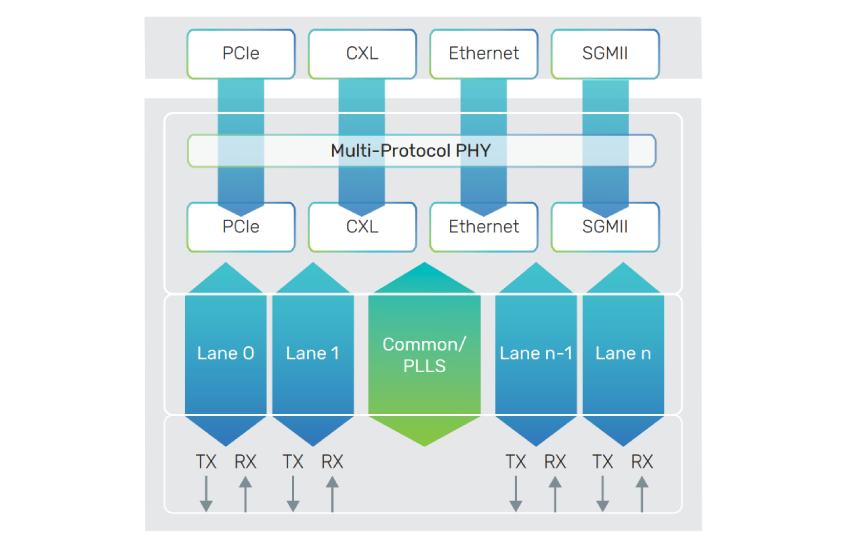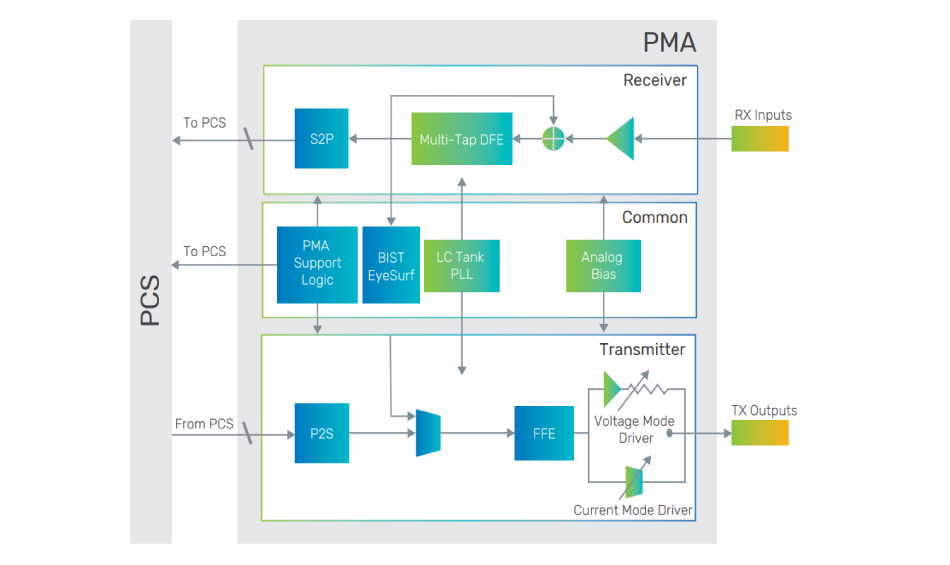Brochure
32/25Gbps Multi-Link and Multi-Protocol PHY IP for TSMC 7nm FinFET
Overview
Overview
The Cadence 32/25Gbps Multi-Link and Multi-Protocol PHY IP for TSMC 7nm FinFET is a high-performance SerDes operating from 1.25Gbps to 32Gbps and specifically designed for infrastructure and data center applications. It features long-reach equalization capability at very low active and standby power. The SerDes offers very low latency for timecritical applications for enterprise-level data communications, networking, and storage systems.
The PHY IP provides extensive flexibility to mix and match protocols within the same macro. The PHY IP is designed to run PCI Express (PCIe), Compute Express Link (CXL), 25GKR, and 10G-KR. Multiple test features are embedded and easily accessible by the end user. A user-friendly graphical interface called EyeSurf provides convenient access to real-time and non- destructive eye scope and bathtubs for monitoring the bit error rate (BER) and the link performance during live traffic.
The PHY IP quickly and easily integrates into any system on chip (SoC) and connects seamlessly to the Cadence controller for full flexibility. This minimizes time and risk of device development. It offers integrators the advanced capabilities, flexibilities, and support for advanced, high-performance designs.
Benefits
Key Features
Product Details
The PHY IP provides performance, reliability, and robustness for the most demanding applications.
The PHY IP is architected as a hard PHY macro with a physical media attachment (PMA) layer and a soft physical coding sublayer (PCS) available for various processes. The PHY IP supports a long -reach (LR) backplane with insertion loss in excess of 36+dB for rates up to 32G. It is specifically optimized to minimize end-to-end latency and power. Low-power modes are also supported (e.g., PCIe L1 substrates) for energy-efficient applications. For robustness, the PHY is designed to operate from -40°C to 125°C, features superior ESD protection, and is designed to exceed the stringent reliability requirements of data center applications.
The PCS complies with the latest PCIe PIPE specification and provides support for the dynamic equalization features of different interface protocols. The PHY IP is designed for handling multiple protocols on one single PHY macro (see table below).
PHY Architecture
The PHY IP architecture provides greater control over floorplanning, placement, packaging, and I/O integration than other hard PHY solutions, while maintaining the reliability and ease of use associated with GDSII macros.
Availability
The Controller IP is available with various configurations and supports the following protocols:
| Protocol | Data Rate (Gbps/Lane) | Process Node |
|---|---|---|
| CXL | Up to 32 | 7nm FinFET |
| PCIe 5.0/4.0/3.1/2.0/1.0 | Up to 32 | 7nm FinFET |
| 25G-KR | Up to 26.5625 | 7nm FinFET |
| 10G-KR | 10.3125 | 7nm FinFET |
| 10G-KR | 5/1.25 | 7nm FinFET |


